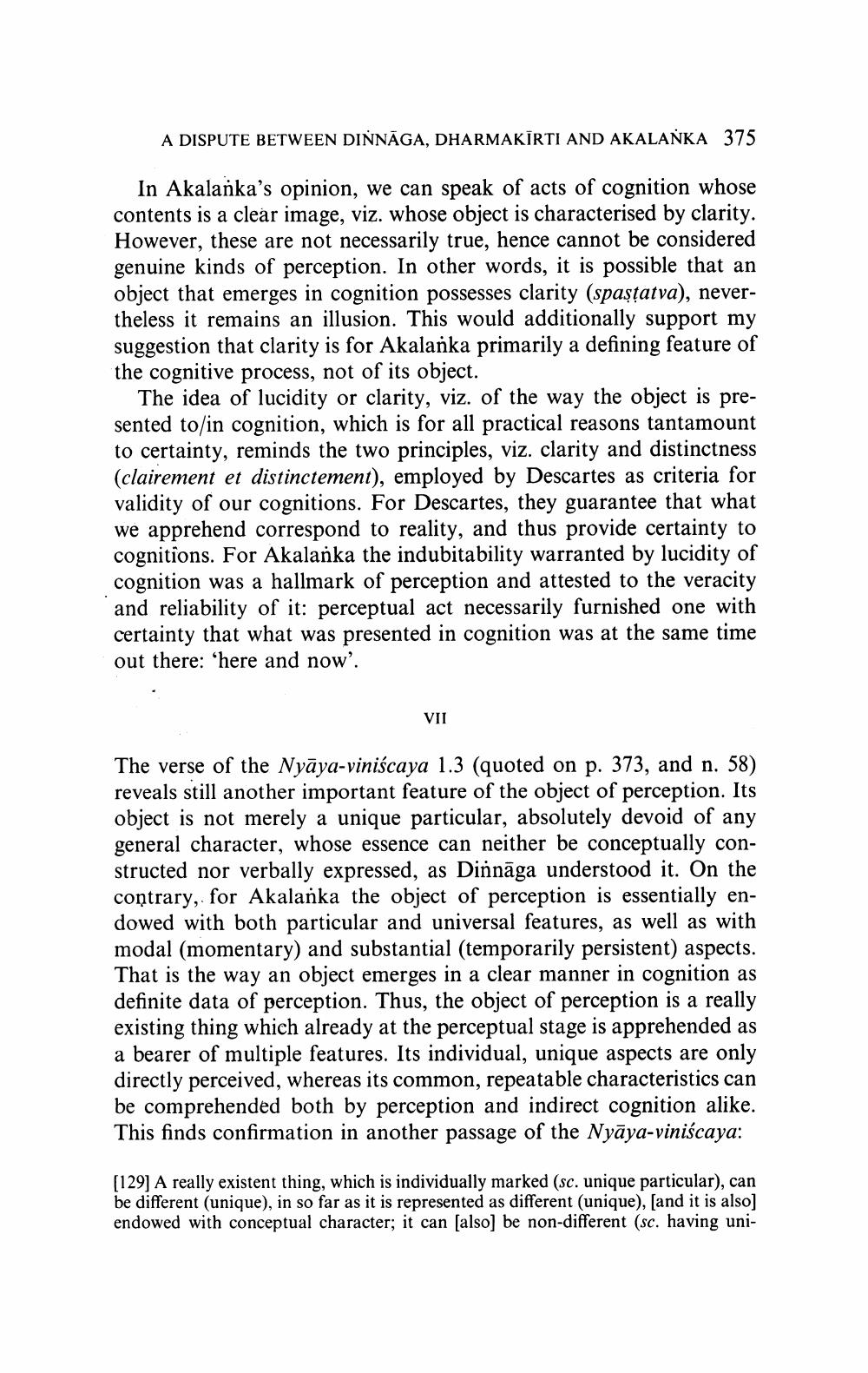________________
A DISPUTE BETWEEN DINNAGA, DHARMAKIRTI AND AKALANKA 375
In Akalanka's opinion, we can speak of acts of cognition whose contents is a clear image, viz. whose object is characterised by clarity. However, these are not necessarily true, hence cannot be considered genuine kinds of perception. In other words, it is possible that an object that emerges in cognition possesses clarity (spaṣṭatva), nevertheless it remains an illusion. This would additionally support my suggestion that clarity is for Akalanka primarily a defining feature of the cognitive process, not of its object.
The idea of lucidity or clarity, viz. of the way the object is presented to/in cognition, which is for all practical reasons tantamount to certainty, reminds the two principles, viz. clarity and distinctness (clairement et distinctement), employed by Descartes as criteria for validity of our cognitions. For Descartes, they guarantee that what we apprehend correspond to reality, and thus provide certainty to cognitions. For Akalanka the indubitability warranted by lucidity of cognition was a hallmark of perception and attested to the veracity and reliability of it: perceptual act necessarily furnished one with certainty that what was presented in cognition was at the same time out there: 'here and now'.
VII
The verse of the Nyāya-viniścaya 1.3 (quoted on p. 373, and n. 58) reveals still another important feature of the object of perception. Its object is not merely a unique particular, absolutely devoid of any general character, whose essence can neither be conceptually constructed nor verbally expressed, as Dinnaga understood it. On the contrary, for Akalanka the object of perception is essentially endowed with both particular and universal features, as well as with modal (momentary) and substantial (temporarily persistent) aspects. That is the way an object emerges in a clear manner in cognition as definite data of perception. Thus, the object of perception is a really existing thing which already at the perceptual stage is apprehended as a bearer of multiple features. Its individual, unique aspects are only directly perceived, whereas its common, repeatable characteristics can be comprehended both by perception and indirect cognition alike. This finds confirmation in another passage of the Nyāya-viniścaya:
[129] A really existent thing, which is individually marked (sc. unique particular), can be different (unique), in so far as it is represented as different (unique), [and it is also] endowed with conceptual character; it can [also] be non-different (sc. having uni




